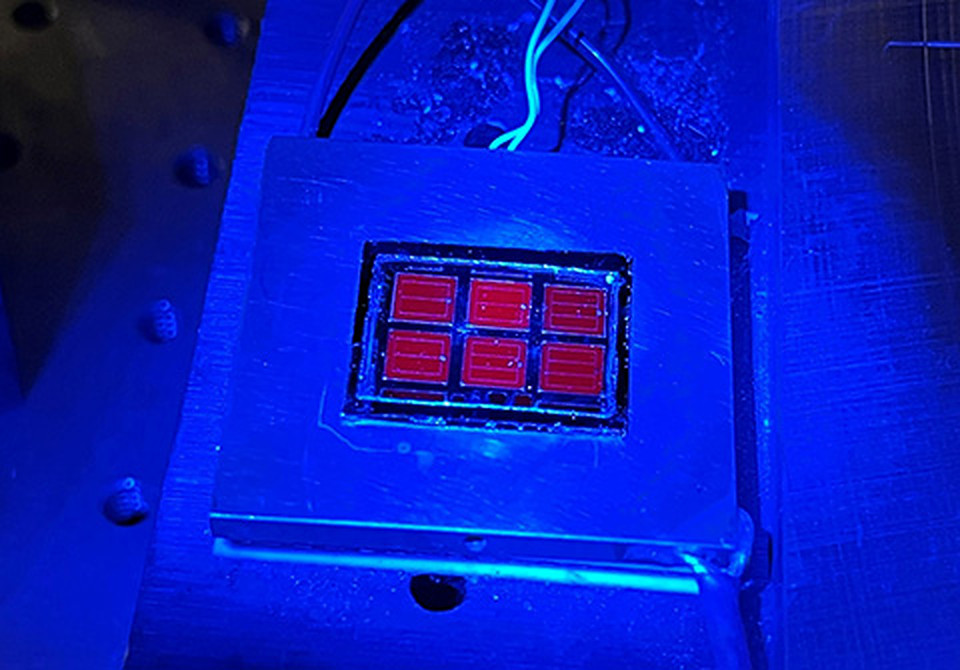From pv magazine Global
A group of scientists led by the US Department of Energy’s National Renewable Energy Laboratory (NREL) set a new world record for solar cell efficiency under normal illumination without a concentrator, achieving 39.5% with their cell based on three layers of III-V materials.
The new record pushes out NREL’s previous record of 39.2%, and with various innovations the group was able to greatly simplify the device – relying on three junctions instead of the previous six. The previous record for a three-junction solar cell was set by Sharp Corporation back in 2013, at 37.9%
The cell is described in full in the paper “Triple-junction solar cells with 39.5% terrestrial and 34.2% space efficiency enabled by thick quantum well superlattices,” recently published in Joule. The group combined layers of gallium-indium-arsenide (GaInAs), gallium arsenide (GaAs), and gallium-indium-phosphide (GaInP) to create a device that could absorb a wide segment of the solar spectrum.
Key to this approach was NREL’s latest work on “quantum wells,” which allowed it to better tune each layer to absorb a different part of the solar spectrum. “While GaAs is an excellent material and generally used in III-V multijunction cells, it does not have quite the correct bandgap for a three-junction cell, meaning that the balance of photocurrents between the three cells is not optimal,” said Ryan France, senior scientist and cell designer at NREL. “Here, we have modified the bandgap while maintaining excellent material quality by using quantum wells, which enables this device and potentially other applications.”
Quantum wells are thin nanostructures inserted into the cell layers to alter the bandgap and other properties. Using these, the group was able to raise the bandgap of the middle GaAs cell layer, to maximize its performance in unison with the other two. While the QW phenomenon is not a new discovery, various challenges working with these materials at the scale of a few nanometers have limited their practical benefits in previous research.
Space spectrum
The group acknowledged that, for now at least, the processes and materials it is working with on these cells are too complex and expensive for most mainstream solar applications. Though NREL is working on a few different methods that could drastically reduce these costs, for now powering satellites and other space technology – where space constraints mean cost can come second to efficiency – are the only likely application for any type of solar cell based on these “III-V” materials, named for their grouping in the periodic table.
NREL also measured its triple junction quantum well cells under the light spectrum they would have to work with outside of Earth’s atmosphere, and reached a beginning of life measurement of 34.2% – which it notes is also a world record for a three-junction cell under this spectrum.
This content is protected by copyright and may not be reused. If you want to cooperate with us and would like to reuse some of our content, please contact: editors@pv-magazine.com.









By submitting this form you agree to pv magazine using your data for the purposes of publishing your comment.
Your personal data will only be disclosed or otherwise transmitted to third parties for the purposes of spam filtering or if this is necessary for technical maintenance of the website. Any other transfer to third parties will not take place unless this is justified on the basis of applicable data protection regulations or if pv magazine is legally obliged to do so.
You may revoke this consent at any time with effect for the future, in which case your personal data will be deleted immediately. Otherwise, your data will be deleted if pv magazine has processed your request or the purpose of data storage is fulfilled.
Further information on data privacy can be found in our Data Protection Policy.